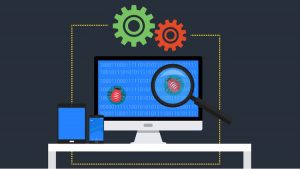In the fast-paced software development world, success depends on a clear definition and understanding of software project requirements. Two vital aspects that drive this understanding are business requirements and functional requirements. Hence, this article examines the differences between business requirements vs functional requirements, and explains their importance and impact on the software engineering process.
What is a Requirement in Software Development?
A requirement can be defined as a formal description of what a software system must accomplish. These requirements serve as the foundation for project planning, design, implementation, and rigorous testing, forming an essential bridge between the client’s overarching vision and the tangible final product.
Furthermore, requirements act as the guiding pillars that shape the entire software development lifecycle. They encapsulate stakeholders’ collective needs and aspirations, ranging from business objectives and user expectations to technical specifications. By delineating the functionalities, features, and interactions that the software must encompass, requirements provide a structured framework that aids developers in translating conceptual ideas into practical solutions.
Requirements serve as development milestones, gauging progress and success. They validate the evolving software and identify issues early, reducing costly revisions. As stakeholders provide feedback, requirements evolve to match changing business and user needs. This keeps the software aligned with the client’s vision, adapting to industry trends.
What are Business Requirements?
Business requirements summarize the objectives, needs, and goals of the client or organization initiating the software project. They provide a high-level view of what the software solution should achieve from a business perspective. These requirements serve as a roadmap for the development team, guiding them to create a product that aligns with the client’s strategic vision.

Business Requirements Example
Business requirements in software development outline the high-level needs and objectives that a software project must fulfill to meet the organization’s goals. Here are some examples:
- User Authentication: The system should allow users to securely create accounts, log in, and recover passwords.
- Inventory Management: The software should track and manage inventory levels, notify when items are low, and provide reports on stock availability.
- E-Commerce Functionality: The platform should enable users to browse products, add items to their cart, and complete secure transactions.
- Reporting and Analytics: The software must generate various reports and analytics to help management make informed decisions.
- Integration with Third-party APIs: The system should integrate with payment gateways, shipping providers, or other external services.
- Mobile Compatibility: The application should be responsive and functional on various mobile devices to cater to a broader audience.
- Multi-language Support: The software should accommodate multiple languages to cater to a diverse user base.
- Scalability: The system needs to handle increased user loads and data volumes as the business grows.
- Security and Compliance: The software must adhere to industry security standards and comply with relevant regulations like GDPR.
- Performance: The application should maintain acceptable response times and handle a certain number of concurrent users.
- User Roles and Permissions: The software should provide varying levels of access based on user roles (e.g., admin, user, manager).
- Notification System: The system should send notifications to users via email or other means for important events or updates.
- Search Functionality: The software should provide efficient search capabilities to help users find relevant information easily.
- Offline Capability: The application should offer limited functionality when the user is offline and sync data when reconnected.
- Customer Support: The software should include features for users to contact customer support and receive assistance.
Characteristics of a Business Requirements
Business requirements exhibit several distinct characteristics:
- The business requirements are intricately linked to the broader strategic direction of the organization. They encapsulate the long-term goals, mission, and vision, ensuring that the software solution contributes meaningfully to achieving these objectives.
- The business requirements are formulated in simple, non-technical language to ensure comprehension among stakeholders from various backgrounds. This language bridges the gap between business stakeholders and technical teams, facilitating effective communication and collaboration throughout the development process.
- Business requirements provide a high-level overview of the project’s scope without going into complex technical details. They focus on the “what” and “why,” steering clear of specific implementation methods. This approach allows developers to maintain flexibility while crafting solutions that fulfill the broader business objectives.
- Business requirements are often quantifiable, allowing for objectively evaluating the project’s success. They establish clear benchmarks against which the software’s impact on the organization can be measured, ensuring accountability and transparency in project outcomes.
- Business requirements foster collaboration among diverse stakeholders, including business analysts, project managers, marketers, and executives. This collective engagement ensures that the software solution integrates multiple perspectives, enhancing its chances of success in meeting the needs of both the organization and its customers.
- They establish a clear value proposition for the software project and also, articulate how the solution will contribute to revenue growth, cost reduction, competitive advantage, or improved customer satisfaction. This value proposition guides decision-making throughout development.
Overall, business requirements include a range of qualities that make them essential for guiding software development projects. They provide a high-level scope, emphasize user centricity, use non-technical language, and represent the organization’s strategic goal.
What are Functional Requirements?
Functional requirements are the building blocks that define the precise behaviors, features, and interactions of a software system. They guide the development team in creating a system that performs the desired tasks accurately and efficiently.
Examples of a Functional Requirements
Functional requirements in software development outline the specific features, behaviors, and interactions that the software should exhibit. Here are some examples:
- User Registration: The system should allow users to create accounts using their email addresses and passwords.
- Product Catalog: The application should display a list of products with their names, descriptions, prices, and images.
- Add to Cart: Users should be able to add items to their shopping cart, which displays the selected products and their quantities.
- Checkout Process: The software should guide users through entering shipping information, selecting payment methods, and confirming orders.
- User Authentication: The system must validate user credentials and grant access only to authorized users.
- Search Functionality: Users should be able to search for products using keywords, and the system should display relevant results.
- Inventory Tracking: The application should update inventory levels in real time as users make purchases, ensuring accurate stock management.
- User Roles: Different user roles (such as admin, customer, and guest) should have varying levels of access and permissions.
- Notification System: The software should send order confirmation emails to users and provide on-screen notifications for successful actions.
- Payment Processing: The system should securely handle payment information, validate transactions, and provide payment success/failure feedback.
- Reporting: The software should generate sales reports, displaying data such as revenue, popular products, and customer demographics.
- Data Validation: The application should validate user inputs to prevent errors and ensure data accuracy.
- Password Reset: Users should be able to reset forgotten passwords by receiving a reset link via email.
- Error Handling: The application should provide clear error messages and guide users on how to resolve issues.
- Integration with Payment Gateways: The system should interface with third-party payment gateways to process transactions.
- Social Media Sharing: The software can allow users to share product details or their purchases on social media platforms.
Characteristics of a Functional Requirements
Functional requirements share the following attributes:
- Technical language is used in functional requirements to describe the complex behavior of the software accurately. Diagrams, flowcharts, and data models may also be used to enhance clarity, enabling developers to comprehend and implement the required functionality accurately.
- These requirements outline users’ interactions with the software and the corresponding system responses. From button clicks to data entry and data processing to generating outputs, functional requirements detail each step of the user’s journey through the software.
- Functional requirements anticipate the potential growth and evolution of the software. They consider scalability—how the software should perform as number of users increase—and extensibility—how additional features can be utilized in the future.
- Functional requirements identify dependencies between different features or components within the software. They also describe how other functionalities interact, ensuring smooth operations and avoiding conflicts.
- Just like business requirements, functional requirements also require collaboration among stakeholders. Developers, testers, business analysts, and designers must work together to ensure the requirements are implemented accurately and meet user needs.
- Functional requirements may vary, depending on how the project develops, what users say, and how technology advances. This adaptability ensures that the software remains relevant and effective over time.
Overall, functional requirements offer a highly detailed and technical view of the software’s functionalities and interactions. Their specificity, measurability, technical language, and focus on user interactions make them essential for guiding the development process and ensuring the software’s alignment with user expectations and business goals.
Key Difference between Business Requirements and Functional Requirements
The key difference between business requirements and functional requirements lies in their focus and scope within the software development process:
Business requirements answer the “what” and “why” of a project. They represent the organization’s top-level goals, demands, and strategic course. Business requirements are geared towards aligning the software project with the broader goals of the business. They serve as a bridge between the client’s vision and the technical implementation.
On the other hand, functional requirements answer the “how” of a project. They specify the detailed behaviors, features, and interactions that the software must possess to meet the business requirements. Functional requirements provide a clear view of how the software should function in response to various inputs and user actions.
Moreover, business requirements establish the scene by outlining the broad purpose and objectives of the software project. They guide the project’s direction, ensuring the software aligns with the client’s vision and meets strategic objectives. Functional requirements, however, build upon this foundation by outlining the specific functionalities and behaviors that will fulfill those business objectives.
To illustrate with an example, consider an e-commerce platform:
The business requirement might be to “increase online sales by providing an engaging user experience.”
The corresponding functional requirement could detail that “users should be able to search for products using keywords easily, add items to their cart, and proceed through a secure checkout process.”
Hence, both requirements are essential for successful software development, ensuring that the final product aligns with business goals and user expectations.
Business Requirements vs Functional Requirements in Software Engineering
| Business Requirements | Functional Requirements |
| Focus on the strategic objectives, needs, and aspirations of the organization. | Specify the detailed behaviors, features, and interactions of the software. |
| Answer the “what” and “why” of the software project. | Answer the “how” of the software project. |
| Provide a high-level view of the project’s purpose and goals. | Guide developers in implementing specific features and behaviors. |
| Lay the foundation for project planning, guiding its strategic direction. | Define the technical aspects of the software’s operation. |
| Align the software solution with the broader business context. | Ensure that the software performs desired tasks accurately and effectively. |
| Expressed in non-technical language to ensure clarity among stakeholders. | Provide a roadmap for development, testing, and quality assurance. |
| Serve as a bridge between the client’s vision and the software’s implementation. | Serve as a basis for creating test cases and validating software performance. |
| Define the desired outcomes and benefits that the software should deliver. | Often include technical language, diagrams, and flowcharts for clarity. |
Conclusion
In software development, business requirements and functional requirements are crucial. Business requirements outline the high-level goals of a software project, while project managers ensures that the functional requirements specify the detailed features needed to fulfill those goals. Clearly defining both types of requirements allows developers to build products that meet the client’s vision and user needs. By distinguishing between the strategic and the specific, teams can deliver successful projects.
Let the Canadian Software Agency handle your projects – contact us today!




